Veteran retail writer Grace Wilson takes the plunge and opens her own booth filled with the cool and the collectible in Old Town Bay St. Louis.
Find your niche
Looking around the Bay St. Louis antique scene, dealers have it fully covered. What’s your passion?
Mid-century modern furniture, folk art, found art, bottles, buttons, music memorabilia, interesting instruments, antique dolls... it’s easy to spot the many passions of collectors represented in the antique shops of Old Town. If you have a penchant for something, chances are others do, too.
My collecting started out with Pez dispensers. From there it was anything with a mushroom on it – which was a lot of vintage kitchen wear. That mushroomed in to barware and ashtrays. When I had a baby, all that was packed up and stuffed animals (especially flamingos) found their place in my life. Stepping back, I saw I had a nice mix of mommy and baby items that needed new homes and The Captain and Pearl was born in the French Potager. “Booths are an extension of the dealer’s personalities,” said French Potager owner Martha Whitney Butler. “My booth has stuff from all over the world because I love to travel. Everybody’s different.” Mix Old and New
Yes, Bay St. Louis is known around the Gulf Coast for being a mecca of antiques. Thanks to shops like Social Chair, Bay-Tique (and many more) shoppers are also loving the contemporary offerings of our town.
Some of the best booths I’ve seen in town have a blend of antiques and almost-new items. A newly embroidered pillow gives an old chair a pop of life. Stick new magnets on an old piece of tin. At Captain and Pearl, we display new items (like our BSL Shirts that benefit Ruth’s Roots community garden) in vintage luggage. Tell a Story
It’s a modern day mantra: Tell a story.
But what does that mean? In the antiques business, they’ve lived and died by this rule for generations. A pocket watch is just a pocket watch. A pocket watch owned by a famous general and worn in the Civil War - now that’s something special. You place items in a certain time and place in history, and suddenly they take on a whole new meaning. And it doesn’t have to be a hundred year old story to make it appealing. We put out some pretty cool handmade toys from Mexico, which didn’t move. We decided to give each one a name and write “Handmade in Mexico” on the tag and it gave them a new level of personality and interest. Refresh All the Time
The best booth owners visit their booths as often as they can to refresh and reshuffle things. Patti Fullilove, who dedicates herself to booths both in Antique Maison and French Potager, visits her booths every day. (#DealerGoals)
It’s helpful to see what people bought, but you can also see what they are picking up. Even if you don’t add or edit new inventory every day, just shuffling things around gives the booth a breath of fresh air, which keeps shoppers coming back. Get into Your Customers Heads (and Homes)
Customers respond to a curated booth. Things make more sense if there’s a theme or items are in context. If you have lots of vintage barware, put it on a bar cart with some booze bottles and cocktail napkins. Put pictures you snap locally in old frames to make them feel relevant.
Keep in mind, lots of folks on the hunt for antiques like to dig. Have a section in your booth that lets them do just that, but don’t have so many items that people will get overwhelmed. Some people feel most comfortable shopping in retail stores so take cues from your favorite shops on the best way to display your items. Most importantly, help your clients visualize your items in their own homes.
This combination antique store/tea room is one of the most unusual (and vast!) shops on the entire Gulf Coast, featuring 75 dealers, a huge variety of teas and made-from-scratch treats.
- story and photographs by Lisa Monti
Customers on Ulman appreciate the shop’s dual appeal, whether they come in for high tea or an heirloom. They can take a break from shopping to enjoy a freshly made dessert, and or sip their favorite tea while browsing. And there’s plenty to take in, with quality merchandise from 75 sellers (plus Young).
The collection draws buyers from all over the United States and far reaching places such as China, Taiwan, England and Russia. When it’s snowy up North, the shop sees loads of Canadians and Midwesterners visitors. It seems every bit of space in the former floral shop’s rambling layout is filled with vintage, nostalgia and antique pieces. There’s fine furniture of all sizes and functions, show-stopping chandeliers hanging overhead, tabletops showcasing china and glassware, beautiful jewelry, silver pieces and children’s toys. The adjacent Quonset hut houses large pieces of furniture and all sorts of furniture, lighting and other finds.
The tea service, managed by Missy Geisel, Sylvia’s assistant, serves desserts and drinks from Tuesday to Saturday from 10am to 3pm. The menu for High Tea Windsor and a Children’s Tea Party includes finger sandwiches, quiches and chocolate covered strawberries.
“We do celebrations and private parties including showers and family reunions,” said Sylvia. “We cook everything fresh and healthy from scratch.” You can get desserts and drinks to go, as well as the popular soups and potato salad. The main dining room seats 35. The private dining room seats 20. Just outside is the Tea Garden and deck, which can accommodate 30-plus. The centerpiece of the welcoming garden is the registered Live Oak named Heavenly Tea Garden. Sylvia said a favorite tea choice is the Earl Grey Moonlight, a combination of sweet, creamy and citrusy. Unusual flavors like White Cucumber and Fox Trot (chamomile and pepperminty) are served alongside other favorites like Ginger Peach and Cranberry. Scones with fresh lemon curd also are available to enjoy with about a dozen kinds of teas. Over four years, Antique Maison Ulman Tea Room has earned a reputation for its savvy pairing of quality antiques and tasty tea room. “Customers have told me this is the only store like it from Texas to Florida,” said Sylvia.
Hours:
10am to 5 pm, Monday - Saturday Dining: Tuesday - Saturday, 10 am to 3 pm Private parties and events by reservation High Tea reservations 2 days prior to event
Whimsical Tramp Art pieces can be found throughout Old Town - and has inspired a number of local contemporary artists. But what in the heck is it?
- story and photos by Grace King
Hobo Art, or Tramp Art, is a term referring to art made of found objects - mainly wood, toothpicks, discarded cigar boxes, crates or pallets - and often whittled into layers featuring geometric shapes.
This art form has been traced back to the 1870s and began to die out in the 1940s. Magnolia Antiques often carries carved knives called Trench Art, a similar art form that refers to decorative items made by soldiers, prisoners of war or civilians affected by wartime who were often literally stuck in the trenches and needed a project to take their mind off their conditions. Of course, they had to work with the materials they had at hand - toothpicks, pieces of scrap wood, wire, popsicle sticks, etc. I’d seen these rustic forms of art, especially in the Delta, but never knew about Tramp Art.
The South has a long history of self-taught artists, many using discarded materials. Museum sensations like Thornton Dial have made being an “outsider artist” more mainstream.
His paintings and assemblages fashioned from scavenged materials hung proudly in the New Orleans Museum of Art during a popular exhibition in 2012 called “Hard Truths: The Art of Thornton Dial.” Patrons were so moved by his show that the museum now houses 10 pieces of art from the Souls Grown Deep Foundation in its permanent collection. His extraordinary body of work continues to garner recognition. It’s easy to find primitive art and furniture in the antiques shops of Old Town once you know what to look for. Antique Maison has some truly one-of-a-kind large-scale pieces. Right through the doorway, shoppers can see a tall form of early folk art — a cupboard with original paint, copper screens and square nail construction. It’s certainly a unique piece made from reclaimed materials long ago.
Further back in Antique Maison, John Walrod’s Steampunk Curiosities are sculptures and wallhangings made from found objects, transformed into fun little creatures, clocks and bits of home goods. Walrod is a contemporary artist whose work brings to mind the intricate and often whimsical works of Tramp artists.
Spencer Gray Jr. at Gallery 220 is also known for his fun, vibrant creations and yard art, also made from colorful brick-a-brack. He creates smaller pieces and larger one-of-a-kind sculptures that are filled with animation and delight collectors.
Artist Joe Derr divides time between Bay St. Louis and New Orleans, creating fanciful sculptures and watercolor paintings. The Derr's paintings carried by Bay Life Gifts & Gallery in Century Hall (112 South Second Street), are "framed" in wooden trays or old cigar boxes.
Bay Life owner Janice Guido says several of her customers now collect Derr's work, vying for first shot at them when he brings in new pieces.
Also at Century Hall, Susan Peterson proudly showed off a small chest of drawers that had all the hallmarks of Tramp Art. Hand carved embellishments, drawers made out of cigar boxes and beautiful bits of decorative wallpaper lined the inside.
Hobo, Tramp and Trench may not be the most flattering names to label a world of art, but it turned out these pieces are some of the most desirable finds in Old Town.
Find them and bring them home before they hit the road.
In a world where going "paperless" is the new trend, artist and ephemera collector Vicki Niolet takes at look at a few of the things we'll be missing.
- story and photos by Vicki Niolet
The term “ephemera” comes from the Greek meaning things that are used or enjoyed only a short time. A collector of ephemera usually seeks printed material other than books, such as brochures, newspapers and magazines.
Handwritten letters, postcards, and manuscripts, basically any loose paper with messages or images, may also be valuable. (Unfortunately this reasoning may empower hoarders who can’t throw anything away.) Most folks randomly accumulate bits of their past in scrapbooks full of ticket stubs, photographs, class report cards, and love letters for sentimental reasons. Some appreciate the artistry and detail of greeting cards with rich colors and elaborate cut outs, such as “cobweb valentines.” Others spend lifetimes tracking down baseball cards, historical documents, or famous autographs resulting in valuable collections that are anything but temporary.
Advertising pieces are one of the most popular categories of ephemera. Long before Hollywood came up with the idea of “product placement” leaving a trail of Reese’s Pieces in “ET,” tempting messages were fed to us unconsciously in fine print on matchbook covers, needle cases, calendars, and other touchable items handled during the course of a day.
An early example of product exposure is the funeral home advertising on the back of paper fans. It straddles the line of insensitivity and genius, while hitting all the situational marks, strategically located on items that were tangible, visible, and very necessary.
Fluttering “Last Supper” fans kept delicate ladies from swooning, while subliminally reinforcing the commercial elephant in the parlor. And most importantly, they solved a problem in an uncomfortable situation. No one likes to grieve in the heat.
Pin ups of movie stars boosted wartime morale of soldiers who were encouraged to join the war effort through inspiring recruitment posters. Movie placards and stage playbills have always attracted the attention of the public as well as collectors.
Entertainment ephemera include iconic concert posters (Woodstock, Monterrey Pop, N.O. Jazz Fest) and letterpress prints made famous by “Hatch Show Print” of Nashville. While these remain highly pursued by collectors, there’s a new breed of collectible creators who capitalize on our need for tangible keepsakes in a technically oriented society.
In 2015 two young entrepreneurs landed a deal on “Shark Tank” for their company, ZinePak. The original idea started as a merchandizing strategy for brick and mortar stores to compete with downloaded music. They gave customers an incentive to purchase CDs with photos, booklets, and souvenirs, enhancing the original idea of album liner notes.
In addition, they design elaborate tickets, programs, trading cards, and mixed media packages for concerts to create a tangible experience lasting beyond the performance. With clients ranging from Dolly Parton to Justin Bieber, the marketing maneuver provides physical proof of super fan status and a new category of 21st century ephemera.
With that in mind, consider the graphic trends of today and you’ll notice a retro vibe. Modern websites employ nostalgic images with classic design flourishes and borders from early paper advertising.
This movement embraces the emotional value of vintage. Circus tent images, art-deco symbols, and printers’ dingbats (the graphic kind, not Edith Bunker) have dominated new print and digital media. Fonts reminiscent of headlines from The Daily Planet echo another era, like facing mirrors, old and new images infinitely reflecting each other.
In general, a disposable feature tends to devalue most items, but in the case of amassing ephemera it is the defining characteristic that sparks a collector’s interest. Although transitory and more fragile than pottery shards or arrowheads, paper paraphernalia also record the history of everyday life.
In the future, flea markets and antique malls full of paper may become archeological digs revealing secrets of the 20th century.
If the trend toward “paperless” continues, eventually anything in our current lives involving paper will become collectible. Imagine your grocery receipt, unearthed in 2099 being scrutinized to discover the secrets of a lost civilization. Be careful what you purchase. You may be defining our primitive society.
Check out the works of Bay St. Louis artist Vicki Niolet on her website,www.vickiniolet.com
This guide to vintage ornaments and Christmas decorations is sure to start a few new collections for those wanting to spice up - or spook up - their holiday decor.
- by Martha Whitney Butler
Either way, these terrifying treasures fetch a high price from collectors all over the world. Thinking about starting a vintage Christmas collection? Check out this beginner's guide to collecting vintage Christmas décor and then hit up that old box in the attic AND your local antique and vintage shops to get started!
German Christmas Ornaments
In the beginning of the annual tradition of Christmas, ornaments varied, from fruits and cookies to pure silver tinsel. It wasn't until the mid-1800s that the spirit of Christmas began its major revival with the help of holiday propaganda via Queen Victoria and Charles Dickens. Around that time, German artisans set a successful trend with hand-blown glass and embossed cardboard ornaments. These can be found in a variety of shapes, sizes, and functions. A sought-after version of glass ornaments is a "kugel," often found in a grape cluster or fruit shape. Cardboard ornaments from Dresden, Germany were a hit as well, and are highly coveted among today's collectors. It's rumored that F.W. Woolworth tested the waters with cost-effective glass Christmas ornaments from a small German village and capitalized on the cottage industry by introducing them in his chain stores. This started a movement of mass production, so when seeking out these ornaments, keep in mind the delicate, hand-blown ones without a mold seam are the most valuable. More German ornaments and décor include paper mâché Santas, candy containers, spun cotton elves, and chalkware nativity figurines. But perhaps one of their most notable productions is of a mythical Christmas figure often dismissed as a traditional Santa or elf - the dreaded Belsnickel.  German Belsnickel statue (note the walloping stick and tree branch) German Belsnickel statue (note the walloping stick and tree branch)
Belsnickel was a helpful acquaintance of Santa who visited German children in the weeks prior to Christmas. Unlike the friendly pushover Santa Claus, Belsnickel carries a single branch that he uses to beat greedy, misbehaving children. He visits door to door, village to village, bearing the gift of beating and a sack full of candles.
In true "good cop/bad cop" fashion, he throws the candles at the feet of the "good" children and sternly raps the knuckles of those too anxious to take their gift. After his abusive reminder to refrain from succumbing to avarice, he sends Santa in later to make nice with the kiddies by showering them with gifts. Some traditions are better left across the pond... Or are they? When searching for the rare Belsnickel, look for paper mâché, chalkware, and cardboard German versions. As quickly as these imported seasonal sensations became affordable to the masses, their prices began to climb due to trading complications and the growing threat of war with Germany. Manufacturers like Woolworth's began to seek other alternatives to cheap production and turned their attention to the East.
Japanese Christmas Ornaments
Japanese manufacturers were the kings of knock-off kitsch and immediately started filling orders for shiny glass ornaments, paper mâché Santas, and cardboard candy containers. Instead of traditional German pastels, the Japanese preferred bright, shiny colors in their glass production. They can even be credited with the creation of cardboard Putz houses and Santa dioramas.
While still very collectible and valuable, Japanese Christmas décor is the most common vintage find because it was available at every five-and-ten store around. With the overseas sweat-shop labor, they were very affordable to the masses. When the US entered World War II, these imports fell out of favor in the States and manufacturers began to seek American-made products.
American Christmas Ornaments
With American glass production at an all-time high, glass companies were interested in the mass production of these delicate decorations. Glass makers like Corning were mass producing millions of wholesale orders, and companies like Shiny Bright began to get in on the action.
At the beginning of the war, the nitrates used to silver and shiny up the ornaments became scarce and ornaments were a little less bright and shiny. These ornaments and those marked "Made in Occupied Japan" appeal to collectors because they serve as a wartime reference.
Retro Christmas: The 40s and 50s

In this era we begin to see the usage of plastics like celluloid, rubber, hard plastic, and glitter. Lots of glitter. Tinsel trees started to pop up in homes all over the country and bubble lights decked the weary branches of over-burdened trees.
Safer than candles, these strands of multi-colored lights brought the ultimate wow factor to the Christmas scene. Mall Santa seemed to ditch the scary paper mâché mask for a more realistic white beard... and children still cried when they sat in his lap. Serial Killer Santa with the angry rubber face was a favorite stuffed toy for kids all over and a less-breakable plastic nativity scene became the household preference. Christmas spilled out into lit-up lawns and the neighborhood competition heightened. Among the most fun collectibles from this era are feather trees, tinsel trees, and figural light bulbs.
While this guide touches on a few easy Christmas collectibles, it barely scratches the surface. Visit your local antique shops and consult with local experts on the various vintage décor. You're sure to find items to add to your collection and, if you're lucky, a creepy elf or two.
Questions about your vintage Christmas décor? Email Martha Whitney
Vintage Vignette - Oct/Nov 2017
What many believe is the finest antique store on the coast is also a place where customers feel like they're right at home.
- story and photos by Karen Fineran
Countryside Antiques, 151 Highway 90, Waveland; 228-467-2338; www.csantiques.com, or find them on Facebook. Open Wednesdays through Saturdays from 10 a.m. to 5 p.m., and on Sundays “by chance” or by appointment.
A woman who was obviously a long-time friend and customer of Mike and Tom immediately struck up a conversation with me about the small jewel-like contents of the glass counter in front of us. Recognizing that I was not a regular visitor to the gallery, she animatedly pointed out to me each of the delicate items that she thought was a particularly good deal.
“This one,” she stated confidently, pointing to a glittering platinum and sapphire ring. “And these here,” gesturing to a pair of dangling gold and diamond earrings, “these are both really fine pieces, and an amazing deal. I’ve bought all of my jewelry here for the last twenty years,” she confided with satisfaction. “This place has the absolute best prices on jewelry and objects d’art that I’ve ever found anywhere – and believe me, I’ve looked around!” As I wandered over the next hour through the expansive space of the gallery, with its aisles of glass showcases and nooks of porcelain treasures, I chatted with several other customers. It became clear to me that, to the antique enthusiasts of the Gulf Coast, Mike Mayo and Tom Cottom are more than just store owners. “Tom and Mike are charming guys . . . incredibly knowledgeable about antiques . . . helped us get our houses back together after Katrina . . . Mike and Tom are the best.”
Antique connoisseurs Tom Cottom and Mike Mayo moved to this area from New Orleans nearly forty years ago, buying the building at 51 Highway 90 in Waveland in June 1978 and establishing Countryside Antiques.
Steeped in heirlooms and history, and surrounded by azaleas, the gallery has become a fixture in Bay/Waveland. It shows off Tom and Mike’s hand-selected and constantly changing collection of European antiques from the 17th to 20th centuries. Countryside specializes in items from France and England, and most of the antiques date prior to 1900. The varied collection includes furniture, silver, oil paintings, art glass, Majolica (finely painted pottery from the 19th century), English Delftware, Staffordshire porcelain, cut glassware, Persian carpets, jewelry, cast iron planters, and miscellaneous decorative objects.
Lauded by many as the go-to shop for European antiques on the Gulf Coast, the store’s stellar reputation seemed to me well deserved. Among row after row of well-lit glass showcases and hand-carved wooden furniture, I came across lovely vignettes of whimsical porcelain dogs and other creatures, French armchairs, crystal chandeliers and sconces, brilliantly illustrated 18th century books, brightly colored plateware, imposing mirrors, gilt-framed oil paintings, intricate woven carpets, crystal serving pieces, unusual lamps, and sterling silver urns. The owners have even converted the traditional screened porch of the residence into a separate showroom for more rustic pottery, furniture and décor items.
One factor that makes Countryside Antiques stand out among the many other furniture stores and boutique shops in Bay St. Louis is that the owners’ passion is antiques, and antiques are all that they sell. You won’t need to sift through new items and reproduction vintage pieces in order to find the true antiques. There, you will find many examples of the European furnishings typically found in old Mississippi and Louisiana estates and plantation homes. These antiques harken back to the history of our Gulf Coast, reminding us of who we are and where we have been. Over the last forty years, Mike and Tom have earned their reputation for quality and knowledge in the antique trade. Shopping at random for antiques can be a tough proposition for those who lack a professional eye. It’s difficult to know what’s reasonable, what’s authentic, and what’s mostly creatively marketed smoke and mirrors (read: junk). The help of knowledgeable curators like Mike and Tom, who work with their customers on a personal level to help them appoint their homes, can make all the difference.
Tom and Mike’s clientele come primarily from the South. There are the devoted locals who scour the shop on a regular basis, and there are the loyal New Orleanians who make a special point to stop and browse every time they are in the area. Clients from Memphis, Houston or Atlanta will call Countryside on a regular basis, to ask Mike and Tom about particular items that they are seeking.
“Many of our clients are discerning collectors, dealers and designers. Some of them are private collectors, and some of them are in the design trade and buying for their own clients. When they need something, they give us a call first, because they know that we are likely to have the particular item that they’re looking for,” explains Tom. Tom and Mike travel to Europe every year to hunt down their bargains at markets and from estates. By doing their own buying, they eliminate upcharges from middlemen, and pass those savings on to their customers. They also sometimes take their shop on the road with them, especially in the Southern states, traveling to well-known antique shows and events such as the Original Round Top Antiques Fair in Round Top, Texas (the “Big Red Barn”). Antiques give individuality to even the newest of homes (or offices), and impart a sense of history and refinement. “When you buy antiques, you end up with something unique and original, and it’s usually much better quality – and still, it’s often less expensive – than similar objects that are new. And we have such a variety of pieces here, I think that we probably have something for everyone’s taste and budget,” noted Mike.
The store receives new shipments of antiques from England, France and Belgium on a regular basis, so if you check back frequently to see what they have, you stand a good chance of finding the right treasures to enhance your home for years to come.
Something For Everyone
Martha Whitney Butler's primer for antique shopping defines shops, malls and consignment places - and gives invaluable etiquette tips for bargain hunters.
Antique Mall vs. Consignment Shop
One of the biggest misconceptions I encounter at the French Potager is people thinking we are a consignment store. A consignment business takes individual items based on an agreed-upon percentage that the store takes upon selling that item.
The agreement is between the consignee (store owner) and the consignor. This is a common type of business for items such as designer clothing and formalwear. Some antique malls adopt this method for items like artwork or high-end furniture, based on availability and space. An antique mall rents spaces or booths to individual dealers for a monthly fee and a percentage of sales: the dealer displays items, and the shopkeeper takes a very small percentage for selling them. This is the most prevalent type of business in our community, giving us a healthy variety of goods.
Booths and Dealers
Dealers are the people who rent the booths or spaces within an antique mall. Most are experienced, seasoned entrepreneurs who rent space and flip items as a hobby or business. They often have day jobs, are retired, or use booths in other towns as satellite locations for their brick-and-mortar stores.
Dealers often spend countless hours at auction; they are the early birds getting all the proverbial worms at the best estate sales, and they take exhaustive trips around the country (or world) to seek out objects of interest for their clientele. It's back-breaking labor to lift furniture, rehab pieces, and haul items from place to place. Considering all the dilapidated structures I've climbed into, the snakes and bees I've encountered, the things I've toted for miles and miles on cobblestone streets in Europe, and the paint fumes I've inhaled, you might understand my urge to cringe a little when someone asks if I'd take less than the price marked for a particular treasure. Often I oblige, because I want nothing more than to do it all again. The thrill of the find is unsurpassed by everything except for the thrill of the sale. Knowing that you can relay the provenance of an item to someone else and they will appreciate it and cherish it is the highlight of this business.
Death and Taxes
I recently read an article about the dying world of antiques – how millennials aren't receptive to the concept or appreciative of the old.
I'm a millennial. I own an antique store. Enough said. That brings me to the “taxes” portion of this segment. I often hear, “If I give you cash, could you not charge me taxes?” If you do this, be prepared for a long-winded speech about streetlights, potholes, and education! The answer is no. Unless you are buying the item solely for resale purposes, and have what is called a resale certificate, you have to pay sales tax.
Evolution of the Antique Mall
Fun, funky, brimming with personality, and serving a broader range of clientele, the shops
in Bay St. Louis cater to both locals and visitors. Don't worry, we still sell vintage and antique items, but we would also like to stay alive. Which brings me to my point: we've evolved our business to sustain the desires of our customers. We might not be all antiques anymore, but don't be put off by new items for sale in our stores. Variety is the key in our business, and Antique Maison’s motto says it best: “Something for everyone.”
Haggling
There's a thrill in it! I understand, trust me.
But there's a right way to haggle and a wrong way. This could be another article in itself, but I'll graze over it here. Malls have different dealers, and thus different prices and personalities. Some dealers will deal, and some won't. The shopkeeper knows which ones will and which ones won't, and they often know who will discount at a certain percentage. Please don't shoot the messenger when she tells you that dealer won't come down off the price! The best time to haggle is when you buy several items from one particular dealer. Also, a little kindness and understanding goes a long way. If you come in for the second time to visit a $350 piece of furniture that you absolutely adore, I would love nothing more than for you to have it – discount approved! Dealers are usually not willing to deal on items under $50-$100, so picking up a bottle opener that's $5 and offering $2 seems out of place. Be reasonable, be kind, and put yourself in our shoes when playing “let's make a deal.” Also, have an offer in mind and make it. We applaud decisiveness in these stores. I hope this article helps you to understand some aspects of how antiques malls work. It's not traditional, and it may seem odd to walk into an antique shop like the French Potager and find a florist in the back! The booths in these malls provide so much more than gifts, goods, and furniture. They're hobbies for retirees, attractions to tourist towns for antique-lovers, and one of them might even belong to a 16-year-old, hustling entrepreneur who dreams of opening her own shop one day - like I did! Are you interested in opening your own booth? Some shops around town currently have waiting lists or openings, so be sure to inquire! Mad for Mid-Century
Tips about picking up great mid-century finds and where to hunt for them in Old Town Bay St. Louis.
- story and photos by Karen Fineran
Clean lines and a streamlined, sleek appearance are the characteristics that define mid-century modern furniture, putting the emphasis on function and utility. With its understated look, less becomes more.
Without intricate lines or cluttered adornments to distract, mid-century modern style furniture tends to be highly practical, serving many different purposes to meet the demands of the modern lifestyle. Form follows function; many furniture designs nest, bend, stack or fold in order to be used more conveniently. Bold, vibrant colors abound, as do graphic blacks and whites. Another distinctive feature of MCM furniture is their use of the alternative man-made materials that emerged during World War II. Post-War designers integrated stainless steel, glass, molded plywood, fiberglass, vinyl, and plastics such as Plexiglass, Lucite and Bakelite into the design of their creations. Many MCM designers also used natural woods, but the one that tends to predominate is teak wood, with its warmth and strength. Popular culture also has helped to bring mid-century modern design into the mainstream. The AMC series Mad Men, which ran from 2007 to 2016, is an obvious cultural influence. The show's reputation for period accuracy extended to the sets, which were specifically designed to reflect East Coast interiors in the 1960s. MCM collector Amy Irvin moved to Bay St. Louis two years ago from New Orleans, where she had started her first antique business, MCM Furnishings. Irving’s collection of retro furnishings, barware, and accessories can now be found at Identity Vintage, at 131 Main Street in Old Town Bay St. Louis.
Amy has been passionate about vintage fashion and design for more than twenty years, beginning her vintage collecting with costume jewelry, dresses, shoes, and fur coats. Five or six years ago, her collecting focus shifted to mid-century modern furniture. Amy was attracted to the era because of its style, its aesthetic, and its functionality.
Amy became particularly enamored with the sophisticated drinking culture of the 50s and 60s and its beautiful barware – like slender cocktail shakers and geometrically-etched martini and cocktail glasses. In an age when we have seen the price of some other antique furnishing styles soar, Amy appreciates being able to find more inexpensive pieces. She loves the hunt for the next treasure, a pastime that she can pursue whether she is at home on the Gulf Coast, in New Orleans, or road-tripping about the United States. It’s easy to find vintage MCM items that fit your budget, Amy explains. All you need is one statement piece to set the tone nicely, and you can build the rest of your room around it. It does not have to be a set, but for best effect, avoid too many patterns and stay within a color range. Sleek and slimmed down furniture in open spaces gives the MCM home a light and airy feel, especially compared to the boxier, darker and heavier furniture styles from other eras. Suzi Walters, the owner of Identity Vintage, the Main Street vintage store where Amy Irvin’s MCM pieces are found, is also a connoisseur of retro pieces. Many of the vintage hats and accessories in Suzi’s collection are mid-century modern, and she also creates décor items from mid-century fabrics. Suzi also has a passion for collecting and selling vintage vinyl LP albums (she has accumulated nearly 1,000 classic albums in her stock already), and she carries vintage turntables to play them on. Now, that’s retro mid-century! The distinctive MCM furniture style combines beauty, innovation, and function. Look for mid-century in other Bay St. Louis antique stores as well: Antique Maison (111 North Second Street), Antique Maison Ulman (317 Ulman Ave.), the French Potager (213 Main Street) and Magnolia Antiques (200 Main Street). Although mid-century isn't the focus of their collections, they often have wonderful MCM items for sale. Although finding genuine and timeless mid-century modern articles can sometimes be hit or miss, what better reason could one have to frequent Bay St. Louis’ diverse retail shops to enjoy the search. Happy hunting, mid-century enthusiasts! Music Makers of the Past
Writer and musician Ana Balka reflects on the virtues of vintage instruments, and goes shopping for them in Bay St. Louis.
- story by Ana Balka, photos by Annamarie Holbrook
The woman—the man’s sister, it turned out—refrained from rolling her eyes as he insisted I allow him to buy it and pay him back later (perhaps he was in the habit of being wildly generous). I was embarrassed, but eventually accepted and made arrangements to pick it up.
Fifteen years later I still have the piano, and I am no virtuoso. But I love that piano, and I’m forever grateful to the man in the antique store. I’ll admit to being something of a sucker for instruments I see in second-hand stores, especially accordions (also no virtuoso, but they’re totally addictive), violins, and guitars. The violin I’ve used to play in rock bands for years is a 5-string Alvarez electric-acoustic that I found for something like $50 in an antique store in Atlanta. Shay Coss of Magnolia Antiques, 200 Main Street, reeled off a veritable philharmonic of used instruments and associated accouterments you can find now in their sprawling display room in Bay St. Louis: A melodica (“It’s like a keyboard you blow into”), $65 with carrying case; “Several metronomes, two really good vintage turntables, a vintage accordion, three trombones, some trumpets, and electric guitar, vintage acoustic guitars, a bass guitar...” Shay trails off, then remembers more. “A mandolin and a violin, and harmonicas.” “Also kazoos. Vintage mint. And a lot of vintage sheet music.” “I buy any good instrument that comes into the shop,” she says.
A few of the stringed instruments found at Magnolia Antiques
The store is a family affair, with stepdad Jack Schornick picking up many of the instruments from the various estate sales and other places the shop sources its stock from. Violins, guitars, and brass wind instruments are typical finds, so I asked Shay about some of the odder instruments she’s seen.
“We had a Merlin,” she says. “It’s a thin-bodied guitar by Seagull. Supposedly it’s got no bad notes, which is great for people like me.” Magnolia Antiques has also come to be known for its unusually large selection of new and used ukuleles. Jack took up the uke habit at some point and, once his growing collection outgrew their house, they decided to start carrying them in the store. Right now there are around 70 of the small, guitar-like instruments in stock including electric, resonator-body (in copper) and bass ukes along with the classic wooden models in all sizes including peanut, soprano, concert, and tenor.
Sylvia Young of Antique Maison Ulman and Tearoom at 317 Ulman Avenue in Bay St. Louis says she and husband and co-owner Ed see many stringed instruments like violins, and the banjo they recently sold. The store currently has some unique offerings like a reenactment bugle — a custom-made replica of the horns used around the time of the Civil War — as well as a 1900 Indian antique brass copper blow horn from World War I.
One dealer in the Youngs’ showroom specifically carries different types of horns and stringed instruments.
All sorts of people come into Antique Maison looking for musical instruments, and they usually sell quickly, Sylvia says. Not everyone looking for instruments is a musician: “I had a lady come in looking for any type of instrument,” Sylvia recalls. “Her father, sons, and grandfather were all musicians, so she has a room that’s like a museum in her house.”
One of the more unusual instruments they had come through was a melodium, “From the 1800s — it was also a beautiful piece of antique furniture,” Sylvia says. “It had a little place to put your candle from back in the days when that’s still what they used. We say that’s where you put your drinks now.” Whatever your musical taste, and whether you play an instrument or just think you might like to try, I recommend taking note of that lonely accordion in the corner when you’re out looking at antiques and vintage items. While it’s rare that someone will step out of thin air and buy an instrument for you as the man in the antique store bought my piano for me, antique stores can yield some unique finds and give you the opportunity to give an old instrument new life. The Doctor is In
Meet Annie Breault, one of the few certified doll doctors in the region, who also offers an the most extraordinary collection of doll-related collectibles on the coast.
- story by Martha Whitney Butler, photos by Ellis Anderson
Her work speaks for itself. Rather than stuffing your early 1800s straw doll with poly-cotton blend, Annie patiently searches for the historically accurate materials. While this might require some patience on the customer's end, they all agree that this love and care is what keeps them coming back. Sometimes Annie even orders and buys materials from countries like England and France since they have a deep, rich history of doll-making and collecting.
From her stories, it sounds like Annie had a beautiful childhood. She can identify and tap into the childhood memories of her customers and bring them to the surface with one of her many vintage toys. She's a good listener, too! After all, it's hard not to share the fond memories you had with your Raggedy Ann doll or your Dr. Seuss books while you're standing in her booth at Magnolia Antiques. She's got a few up her sleeves.
Annie has traveled overseas to find some of the most interesting objects. Nothing misses her eye when she shops, making her selection of items vast and varied. One of her favorite trips was to Germany where she got to dig up the remains (for lack of a better term) of miniature porcelain Frozen Charlottes from an abandoned doll factory. These tiny little ladies sometimes make their way into her lively art dolls and jewelry pieces.
She's repaired dolls that have been through fires, floods, and the toughest elements - grandchildren. She's even had a customer send her a haunted doll! Now THAT is pretty creepy. There are so many touching stories that she has shared with me. She once told me about a doll that a little girl carried throughout the holocaust that bore a secret message inside of it. Sometimes I think she repairs much more than just the dolls-she heals the customers too. When I start to miss my Glo-Worm, or when I go home and assess my 401k retirement plan of Madame Alexander dolls and Beanie Babies, I just call Annie up and chat with her. Once in a while she'll give me an awesome broken doll face or cracked composite doll head for me to use in my bizarre artwork. She's constantly making people's days and is just a great person to know and talk to. So if you're ever in need of some doll medicine, or just want to revisit your childhood, go see the doll-faced doctor (with the best bedside manner in town) at Magnolia Antiques, 200 Main Street, Bay St. Louis on the Mississippi Gulf Coast. The Language of Flowers
Shoofly columnist Martha Whitney Butler takes a #tbt to #tve (the Victorian era) to translate the language of flowers.
Floriography, as it is formally known, was practiced most famously during the Victorian era as a way for lovers to convey cryptic messages to one another. Often times these messages were skewed and wrought with folly, but if the sender took the time and care to pronounce the "words" correctly, they could be translated quite accurately.
When the sender selected a bouquet, he or she would carefully select each flower based on its meaning. Several flowers could create an elaborate display of affection, but one wrong bud could send the recipient flailing into a pit of despair. Some even used it to schedule a secret rendezvous right under a watchful guardian's nose. It quickly became the language of young lovers engaged in whirlwind Romeo and Juliet romances. In this era of etiquette, it was considered impolite to express emotions in public. One could not peacock themselves on Facebook and express their joy or disdain, so they expressed themselves with poetry, romantic literature, and flowers. Real flowers - not to be confused with flower emojis. They actually gave each other flowers. Allow me to translate: ❤️= flowers ☺️= flowers ?= flowers
When I design flowers for weddings and daily arrangements, I am often cognizant of the flowers I am using and the stigmas attached to them. For example, you wouldn't want to send your mother a bouquet of red roses because they denote passion - gross. When I create a bridal flower crown, I often use myrtle as the base because it symbolizes a happy marriage.
Besides reading into the meaning of each flower, there was a whole set of etiquette that applied to the hand off. Handing over a bouquet with the right hand would denote a "yes" response, while handing it over with the left hand would mean "no". For example, if a lady received a bouquet, plucked a bloom and handed it to the gentleman with the right hand, she was accepting his token of affection. Handing the bloom over with the left would mean rejection. Remember, the Victorian period was exceptionally rigid when it came to social graces. To reject someone in a subtle manner such as this was the polite thing to do. A form of this is still employed today: "swipe right" when you like someone and "swipe left" to make them go away on dating apps like Tinder. Some things never go out of fashion... Subtle rejection is one of them.
If you look up each flower, you will see like in any language, the translations vary. However, if you're lucky enough to find an antique copy of The Language of Flowers, scoop it up! Several of these texts were created in pocket-sized versions so that they could be produced on the spot. Equate it to the Pokémon Go craze of our era - it was THE thing to do!
I do caution people to not look into it too much, but it was a fun pastime in the old days to receive a tussie-mussie and scurry to your flower dictionary to interpret a meaning that may (or may not) lie within the blooms. Can you just imagine some poor gent handing over a freshly-plucked hydrangea (heartlessness) to his fair lady? Oh, the humanity! Below you will find MY TAKE of a few favorite flowers that are readily available this Valentine's season and their meanings. For a more comprehensive (and true) guide, check out the Old Farmer's Almanac.
Ranunculus - "I don't know what this flower is called, but the florist said you would love them."
Roses (gas station variety)- "I bought you this rose and a pack of Camels too!" or "I bought you this rose so I could use the glass tube it came in for a chemistry experiment." Roses (grocery store)- "I forgot the milk, but grabbed these tie-dyed roses on my way out in an effort to appease you." Roses (florist)- "I thought about you in advance and wanted you to know how much I love you." Auld Lang Syne - What Does It Even Mean???
One columnist's quest to see why we all sing a ballad at New Year's that no one understands.
- by Martha Whitney Butler
The words in the title roughly translate to “old times’ sake” with a message at the heart of the song telling us to cherish our old friendships and the events of the past year.
The song is brimming with nostalgia, and even though I didn't know the words, the tune and the fellowship that it evoked around me was moving. Some years you can see it have a jubilant effect on a crowd and others you see it wash over everyone like that scene in Forest Gump where Lieutenant Dan is just sitting there staring off into space with confetti streaming all over him.
Every year, this song gets a little quieter because it hasn't thoroughly been instilled in our new generations. I'd put it right up there with cheetahs at these point. It's almost on the endangered species list of songs.
I'm hopeful that Beyoncé will cover it and we'll see its revival, but until now, all we have is you, Shoofly readers. Check over the lyrics and see how you feel.
Don't worry, the words didn't make a lot of sense to me either, but I'm really digging the "cup o' kindess" part. I'll have three of those, please!
I would think most of you don't recognize the full version because the first part is what we traditionally hear when the ball drops in Times Square (thanks, Dick Clark). So let's learn it for this year, sing it at the top of our lungs, and then put on David Bowie's “Changes” as we turn and face the strangeness of 2017. That's A Wrap!
Shoofly collectibles columnist, Martha Whitney Butler, wraps up this year by exploring the art of gift-wrapping.
I am, in fact, a second-generation gift-wrapper. It's in my blood! My mother was bored one holiday season and took a job wrapping gifts at the department store she modeled for called Sullivan’s in Hendersonville, Tennessee.
One of her best gift-wrapping anecdotes is the time June Carter came in and purchased 100 pairs of panties for her staff and friends and my mom had to wrap them all. After all of that, Ms. Carter left her a $4 tip. Which brings me to my first holiday hint: tip your service people adequately! They're working in an extra-high-stress environment and their ultimate goal this time of year is to please every single person they encounter, and that's certainly a feat that merits monetary encouragement. I wonder how many people out there stop to think about the origins of the particular practice of gift wrapping. It is, after all, almost an instinct to hide the gifts once we purchase them. This notion has held true for centuries. In fact, the practice dates back to the invention of paper by the Chinese in the second century B.C. Almost as soon as humans invented paper, they started wrapping gifts in it. Amazing. Then, the paper was made of fibers like hemp and bamboo, and was often coarse. Other papers and fabrics were employed, but it wasn't until Hallmark started coming out with decorative paper that we started to yearn for more possibilities. Boy, are they infinite!
Personally, I fall prey to a good printed paper. I want my gifts to stand out under the tree. I like to visually keep track of them as they are passed around the room. Each year, the paper is different, but the technique (passed down from my mother) is the same.
At my store, I like to giftwrap purchases with vintage wallpaper, newspaper, or brown craft paper. The paper I use is thick, durable, and easy to crease on the corners. Holiday hint: crease all corners of the wrapped box for a sharper look. I love using the newspaper and craft paper because they just remind me of a time when giving and receiving gifts was rare and tape hadn't been invented. I consulted my grandmother on depression-era gifts and she told me she “was lucky to get a candy cane” at that time. She did tell me that she remembered wrapping gifts in newspaper and making her own paste with flour to seal the packages. Then she'd top the gift with a big red bow. I think this is a classic look that will never go out of style. Craft paper with a plaid bow is also a look that will never be surpassed by the likes of 100 grinning snowmen. If you buy paper from a school fundraiser, pick something you like. You will most likely have plenty left over the next year. When you buy from a store like Walmart, make sure to check how much you are getting. It might only be $1.50, but when you run out halfway through your second gift, you'll be cursing. Also, the thicker the paper, the cleaner the cut. Holiday hint: thicker wrapping paper allows to you slide the scissors through rather than chomp angrily at it.
Some more tips: When it comes to the actual wrapping, if you're OCD like me, you'll want to get the paper with the grid inside. As for tape, please get the clear kind, not the unsightly frosted type. For a clean, professional look, make sure the paper exceeds the boundaries by one inch, then fold the excess under at the edge of the box and tape horizontally.
You can find many resources on YouTube for professional wrapping tips and bow-making. However most stores in Old Town offer this as a courtesy with your purchase. I have several clients that drop their gifts off with me and I wrap them all for a fee. I've been doing it for the same people for years and nothing makes me grin inside like knowing what everyone is getting for Christmas. It’s a great feeling and a special way to wrap up the end of the year. For professional gift-wrapping services, please contact The French Potager at (228) 364-3091. Accepting gift-wrapping orders until 12/22. You make the list, we check it twice. We wrap anything for anyone, naughty or nice! Antique Maison Ulman
|
|
Bay St. Louis is known as a town that embraces the unusual. So it shouldn’t come as a surprise that one Saturday afternoon in October, over two-dozen women dressed in Downton Abbey style – complete with fancy hats - filled the English Tea Room at Antique Maison Ulman.
Eating delectable sandwiches and sweets while sipping hot tea from antique china cups, these elegantly chapeau-ed ladies chatted and laughed during a special celebration of classic English author Jane Austen. |
Sponsor Spotlight
|
The Tearoom on Ulman Avenue has been open for two years and it’s already acquired a reputation as the go-to place for visitors to the Mississippi Coast who hail from the British Isles – as well as a popular place to host bridal and baby showers, family reunions, wedding anniversaries, birthday and graduation parties and even business meetings and fundraisers.
Proprietor Sylvia Young says it’s the only authentic English Tea Room in South Mississippi. From Tuesday through Saturday, from 10am – 3pm, anyone can take a shopper’s break in the tearoom and be served a pot of tea, pastry or scone.
While reservations are required (48 hours in advance) for the formal High Tea Windors with all the food and frills – Sylvia welcomes groups as small as three people (She recommends that party planners make reservations now for the holiday season).
There’s a private room that can seat up to twenty people (perfect for meetings), while the entire tearoom opened up can seat 55 people. There’s no charge for use of the venue when High Tea is served and made available for up to two hours.
“High Tea” British style is a full meal by American standards. It includes a bounty of goodies served up on a three-tier stand. Guests help themselves from the tiers.
The bottom tier is filled with a variety of small sandwiches, including roasted turkey, chicken salad and cucumber with basil pesto. On the middle tier are side items like potato salad, quiche and artichoke delight. On the top tier are desserts – everything from chocolate-covered strawberries and cherries to ambrosia, to fruit-filled scones served up with lemon curd and fresh clotted cream.
For children’s parties, there’s a special menu that appeals to younger palettes, including homemade cupcakes and finger sandwiches made with Nutella.
“We make everything fresh for all the teas,” says Sylvia. “Nothing’s packaged or processed, it’s all made from scratch. For instance, we roast our own turkey for the turkey sandwiches.” Then she laughs and says, “We do everything but run the turkey down!”
She says her guests from Great Britain are usually surprised to be served gumbo with tea, but after trying it are ready to take back the recipe to their own tearooms in England. But the culture swap goes both ways. They also give their favorite tearoom recipes to Sylvia and share “the secrets of the Queen’s tearoom” to make the experience in South Mississippi more fun.
Then there’s the tea itself. Sylvia currently stocks over 15 different types of tea. It’s all served up in charming antique teapots and cups. Larger private parties can also order a side cart of extra drinks, soft drinks, lemonade and coffee.
Don’t have a costume, but want to post a few photos of your tea event on social media? Sylvia has that covered too, with an array of both ladies and men’s formal hats.
This spring, Sylvia and her husband Ed are expanding the tearoom by creating a “tea garden”. They’re landscaping the courtyard area now, which will feature fountains, birdbaths and garden statues. Beneath the boughs of a large live oak tree, they’re building an arbor where couples can be married, with a seating area for the bridal party.
“We’ve built a great reputation through the years, based on asking reasonable prices for quality merchandise - all attractively displayed, ” says Sylvia. “In Antique Maison on Second Street, I’ve got forty dealers with a waiting list to get in. That’s why we opened the Ulman location and tearoom.”
Spring and fall, auctions take place at Antique Maison Ulman (to sign up for notification, email them at: [email protected] )
The Youngs take furniture on consignment as well at Ulman Avenue, as long as it’s solid wood and in good condition. They research to price fairly and accurately. Since Ed Young grew up in the family furniture business in New Orleans, he’s been a furniture dealer for 60 years plue. Sylvia’s been working in the antiques furniture business for a dozen years.
Pre-Katrina, at the N. Second Street location, the Youngs owned and operated one of the most popular bridal rental operations on the coast, Bon Temps Roulé. After the storm, they were left with a building, but not much else. They reinvented themselves by reopening as Antique Maison just a year after the storm, to provide spaces for local dealers and help residents have a place to shop to refurnish and redecorate their homes.
“We just don’t give up,” says Sylvia, smiling. “My secret is endurance, a progressive attitude to keep up with the market, and just plain old dedication and determination.”
She smiles. “I guess some of those overlap.”
Ready… Set… The Table
|
I'll never forget the Thanksgiving when my mom threw her hands up and screamed, “Jesus take the wheel!”
While she didn't necessarily throw her hands up and scream, her feelings of exhaustion and frustration were conveyed through a more startling medium in our home- the use of paper plates. After years of designing elaborate table scapes, it was her way of showing that she felt unappreciated and probably a test to see if we were as authentically cretinous as we liked to pretend. It worked. Those thin, droopy, soggy plates sent a cold shiver down the spines of those in the Butler household that day. At first, we examined them like Neanderthals would examine a modern tool. Then came the whispering, followed by the cries of her litter. Unforgiving remarks ensued through the buffet-style line until someone had the audacity to ask about her mental state. Probably not the best idea… |
Vintage Vignette
|
The time the table scape was absent and the silver sobbed while being hidden away in the drawer was just plain rotten. It proved to me the importance of the moment around the table shared with family and a colorful mixture of my brothers' flippant girlfriends. It was my mother’s time to shine, the home’s time to be full of life, and our time to be thankful.
Alternatively, there's nothing wrong with NOT doing this, but please do leave inspired by the décor when you leave the table of someone who has taken the time to do so. Better yet, help them wash the dishes afterwards since these are not items to simply cast into the jaws of a dishwasher.
Or better than that, help them dive into the trash to retrieve the sterling silver pieces that have gone unaccounted for post-meal. Here’s a tip: before you suspect your kleptomaniac aunt or the gum-chewing girlfriend of taking the sterling flatware, check to make sure it hasn’t fallen down the disposal or accidentally scraped into the bin.
If you haven't been endowed with heirloom china, you can always scout it out at your local antique shops. Even be on the lookout for it at your local thrift stores, as it often goes neglected.
Also, don't be afraid to mix and match. I often find myself flipping over my china to see what company produced it at the Sycamore House. Its a fun and delightful way to set a table, especially if you have the desire to learn about different patterns and origins.
Are you the newbie - taking on the service for the first time? No one expects you to offer a Downton Abbey-style dinner. If you need china, don’t be afraid to ask your family. I believe they would be absolutely flattered to be asked to teach you their ways. The veterans may very well be at a “paper plate” stage, but instead of just throwing your hands up, ask for help. There is bound to be an eager new daughter-in-law or impermanent girlfriend just waiting to showcase their “traditional” hot pink fluffy Pinterest-inspired dessert or multi-colored deviled eggs (guilty as charged on the latter.) Use it as a time to pass on your knowledge and ancient wisdom.
And for the persons who have simply run out of time this year, call in the professionals. This is a service offered locally by your very own Shoofly columnist, moi.
Go forth and be thankful this season. Show it in every way you can. Put out the china, silver, and crystal for your loved ones and deck the halls. I hate to be trite, but we really never know when our time will come and the last holidays we want to reflect upon are those littered with paper plates and plastic memories.
For professional table scape services or consultations, etiquette advice, home décor, floral centerpieces, silver polishing, linen pressing, and wine pairing, please call The French Potager 228.364.3091.
Vintage Cookbooks Add Spice
|
How y'all are? Fall is finally in the air and the crisp, cool 85 degree weather is ushering in memories of warm and loving holidays with family. I found myself reminiscing about favorite holidays through the years with my neighbors at Starfish Café and it got me to thinking about all the wonderful meals I've shared with family and friends.
Inspired by the sentiment, I began to ponder the roots of all the culinary bliss that besieges our tables at this particular time and linked it to what I now believe is the very soul of cooking - our cookbooks. In this day and age, recipes linger in the internet atmosphere, but I guarantee you won't find my mother’s sweet potato casserole through any search engine, for it resides within the smudged pages of the well-loved Lester Memorial United Methodist Church: Sharing Our Best cookbook. Cookbooks like this are a prize find. |
Vintage VIgnette
|
Other local cookbooks to look out for are produced by Junior Leagues and Junior Auxiliaries. Those broads over at the Junior League would wear white after Labor Day before they submitted something off the side of a box. That’s what makes these particular cookbooks so trustworthy. These gastronomic assemblages of nonpareil regional cooking represent the palate of an entire community, and they WILL NOT disappoint. If you see one, don’t hesitate to grab it. You’ll be able to identify them easily, as they’re usually the ones with ragged covers and stains from the years of reference they endured.
Living close to the gastronomical capital of the U.S., there’s no shortage of fantastic publications out there authored by our favorite Chefs de Cuisines from New Orleans. I can’t help but get tickled every time I see Justin Wilson smiling from the cover of one of his Cajun cookbooks. I’ve referenced him twice already, if you haven’t noticed.
Paul Prudhomme will take you on a glorious exploration of Cajun Cuisine (and inspire a little melancholy since he recently passed away). Frank Davis lit up a conversation that I had with my husband just last night while Emeril was staring up at us from the coffee table.
Food is important in this house, with my husband being a chef. It’s really about all he talks about - there are food sermons every night in this house, and the cookbook is his Good Book. Even though he doesn’t ever follow directions (or ask for them), he uses the books as a guide for ingredients and inspiration and often quotes his Gospel of Gumbo this time of year.
Historic cookbooks like this provide a lot of insight on how and why we prepare things the way we do. A lot of gastronomes of great tend to reference their grandmother’s or mother’s cooking in regards to certain dishes. I find that I mostly cook out of nostalgia. Recreating happy memories through the food on my table is something I do every year.
I call my grandmother every year to get her grandmother’s blackberry cobbler recipe. Even though I’ve memorized it by now, I just like to call her to tell her I’m making it and that I love her. Food will make you do that.
One of my favorite cookbooks, Mandy’s, is an example of a character formed from the memories of an author’s favorite cooks growing up. These types of cookbooks not only bear the heart and soul of a chef and author, they reveal the most intimate and loving aspects of the meals.
Be on the lookout for these gastronomic gems this season, especially if you love regional fare. They are scarce and get snatched up fairly quickly at estate sales and by eager sister-in-laws.
I once had a customer who bragged to me of her mother’s estate, “My sister-in-law got the jewelry, but I got the cookbooks and recipes.”
They’re THAT important! If you really want to stumble on a gold-mine of great recipes, shop at your local bookstores and antique stores. After all - behind every great meal is an even greater cookbook.
Haute Mess
- story and photos by Martha Whitney Butler
|
You've seen them. They sparkle, they glisten; they dance, laugh, and glow. Parading colorfully down the street during Lundi Gras, they twist and turn, wink and bestow hand-painted oysters upon parade participants.
They're the fabulous ladies of The Raw Oyster Marching Club and they're always dressed to impress! Lucky for you, these ladies are cleaning out their closets and purging them of a ton of sparkling fab finds. On the third floor of Bay Emporium, you’ll find their booth, Haute Mess. It's really not that hard to locate, as the top of their booth is bordered with gold and red glittering flames from their debut at the Mystic Krewe of the Seahorse Lundi Gras parade, where they danced to the song, Fireball. |
Vintage Vignette
|
You'll find a variety of costumes, jewelry, party supplies, and accessories. They've even stocked their space with children’s costumes AND costumes for pets! The booth represents the life of the party that the Oysters have become. With the upcoming holidays and parade season on the brink, be sure to check out their space for some inspiring finds!
Not only are the Oysters selling their items, they're taking donations! If you would like to donate your costumes, shoes, jewelry, and party accessories, please email [email protected] OR message them on Facebook. So before you head off to Party City or zone out for hours poring through Amazon, remember Haute Mess on the third floor of Bay Emporium!
Come and visit with the fantastic ladies of #ROMCBSL at the grand opening of Haute Mess: Second Saturday, September 10th from 5-7 p.m. on the third floor of Bay Emporium.
Hours:
Friday 11-5
Saturday 11-5
Sunday 11-3:30
A Floor to Explore
- by Martha Whitney Butler
|
As I ascended the stairs to the third floor of Bay Emporium on Second Street in the sweltering summer heat, I didn't know what to expect.
The last time I had crossed the threshold, things were in the works. I was so enchanted by an old haunting photograph of a Woodmen of the World event hanging on the bottom floor that I all but begged owner Vicki Niolet to let me up there. It was marvelous. |
Vintage Vignette
|
Vinyl in Vogue
- story and photos by Suzi Walters
|
“Records are coming back!” This is a statement I hear almost daily in my shop, and it is a statement that is both true and false. Vinyl records are certainly back on the pop culture landscape.
There are more being pressed and sold at present than at any other time since the advent and introduction of the compact disc as a medium in the mid 1980s. On the false side of the statement, vinyl has always been collected by music and art aficionados. So to many, records have never been out of vogue. The appeal of vinyl as the chosen way to get one’s music is multifaceted. Record collectors experience the joy of holding the artist’s work in their hands as opposed to the somewhat transparent nature of a digital download. |
Vintage Vignette
|
The basics of record collecting are quite simple — the most important being buy what you love. If you find joy in a certain artist, that truly defines the value of the object.
However, to get the most bang for your buck, it is helpful to do your homework before the hunt. As a book collector hopes to acquire a first edition of a beloved volume, for a vinyl collector a mint condition first pressing is the most desirable version. With millions of records available out in the secondary marketplace, this can get confusing.
A perfect example of this would be the Beatles, whose discography has been repressed many times under labels like Parlophone, Capital, and Apple, as well as many import labels. To help sort this all out, there are many online databases available where one can enter in the record catalog number. This may help ascertain the generation of pressing. The catalog number is usually found on the top right corner of the back of an album’s cover.
The most important thing is, of course, the music itself. Secondhand and vintage vinyl should be clean, glossy, and appear flat. Imperfections to the eye do not necessarily mean the record is unplayable, though. Unless new and unopened, most used vinyl will have visual flaws. Rule of thumb is to run your finger over these imperfections; if you can feel the flaw, your turntable stylus will likely react to it as well.
Collecting records is akin to collecting an art form, the fun in it being that there is something for everyone. For the serious collector, there are box sets, limited editions, picture discs, colored vinyl, split colored vinyl, imports, and out of print pressings. For the casual collector, vintage and second hand vinyl is not hard to find, and the hunt is an absolute blast.
Whether taking a joyful ride down memory lane or discovering tunes and soundscapes that inspire and entertain you, the real truth is that records aren’t just back, they’re here to stay!
The Mother of All Takeovers!
- story by Marcia Butler, photos by Martha Whitney Butler
|
How can a wife, mother of five children, and high school teacher find time to indulge her passions of antiquing and gardening? Simple! You involve the children.
|
Vintage Vignette
|
Martha Whitney looked forward to seeing the glitzy costume jewelry and the artwork, not to mention the free Cokes and gifts (which were sometimes kittens) Danny had awaiting her. Usually, all the children looked forward to our antiquing trips because each had a favorite item they stayed on the lookout for: Heath: sports memorabilia; Ben: knives and fishing tackle; Will: fishing lures; and Caroline: antique quilts.
Categories
All
15 Minutes
Across The Bridge
Aloha Diamondhead
Amtrak
Antiques
Architecture
Art
Arts Alive
Arts Locale
At Home In The Bay
Bay Bride
Bay Business
Bay Reads
Bay St. Louis
Beach To Bayou
Beach-to-bayou
Beautiful Things
Benefit
Big Buzz
Boats
Body+Mind+Spirit
Books
BSL Council Updates
BSL P&Z
Business
Business Buzz
Casting My Net
Civics
Coast Cuisine
Coast Lines Column
Day Tripping
Design
Diamondhead
DIY
Editors Notes
Education
Environment
Events
Fashion
Food
Friends Of The Animal Shelter
Good Neighbor
Grape Minds
Growing Up Downtown
Harbor Highlights
Health
History
Honor Roll
House And Garden
Legends And Legacies
Local Focal
Lodging
Mardi Gras
Mind+Body+Spirit
Mother Of Pearl
Murphy's Musical Notes
Music
Nature
Nature Notes
New Orleans
News
Noteworthy Women
Old Town Merchants
On The Shoofly
Parenting
Partner Spotlight
Pass Christian
Public Safety
Puppy-dog-tales
Rheta-grimsley-johnson
Science
Second Saturday
Shared History
Shared-history
Shelter-stars
Shoofly
Shore Thing Fishing Report
Sponsor Spotlight
Station-house-bsl
Talk Of The Town
The Eyes Have It
Tourism
Town Green
Town-green
Travel
Tying-the-knot
Video
Vintage-vignette
Vintage-vignette
Waveland
Weddings
Wellness
Window-shopping
Wines-and-dining
Archives
July 2024
June 2024
May 2024
April 2024
March 2024
June 2023
March 2023
February 2023
January 2023
December 2022
November 2022
October 2022
September 2022
August 2022
July 2022
June 2022
May 2022
April 2022
March 2022
February 2022
January 2022
December 2021
November 2021
October 2021
September 2021
August 2021
July 2021
June 2021
May 2021
April 2021
March 2021
February 2021
January 2021
December 2020
November 2020
October 2020
September 2020
August 2020
July 2020
June 2020
May 2020
April 2020
March 2020
February 2020
January 2020
December 2019
November 2019
October 2019
September 2019
August 2019
July 2019
June 2019
May 2019
April 2019
March 2019
February 2019
January 2019
December 2018
November 2018
October 2018
September 2018
August 2018
July 2018
June 2018
May 2018
April 2018
March 2018
February 2018
January 2018
December 2017
November 2017
October 2017
September 2017
August 2017
July 2017
June 2017
May 2017
April 2017
March 2017
February 2017
January 2017
December 2016
November 2016
October 2016
September 2016
August 2016
July 2016
June 2016
May 2016
April 2016
March 2016
February 2016
January 2016
December 2015
November 2015
October 2015
September 2015
August 2015
July 2015
June 2015
May 2015
April 2015
March 2015
February 2015
January 2015
December 2014
November 2014
August 2014
January 2014
November 2013
August 2013
June 2013
March 2013
February 2013
December 2012
October 2012
September 2012
May 2012
March 2012
February 2012
December 2011
November 2011
October 2011
September 2011
August 2011
July 2011
June 2011






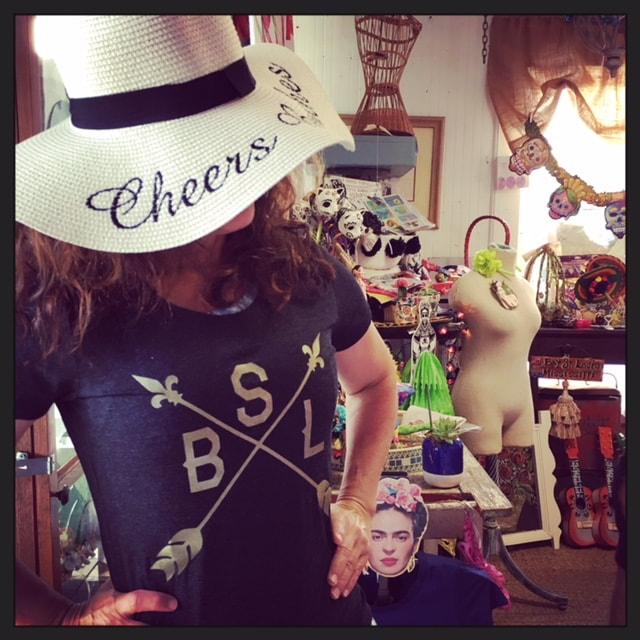
























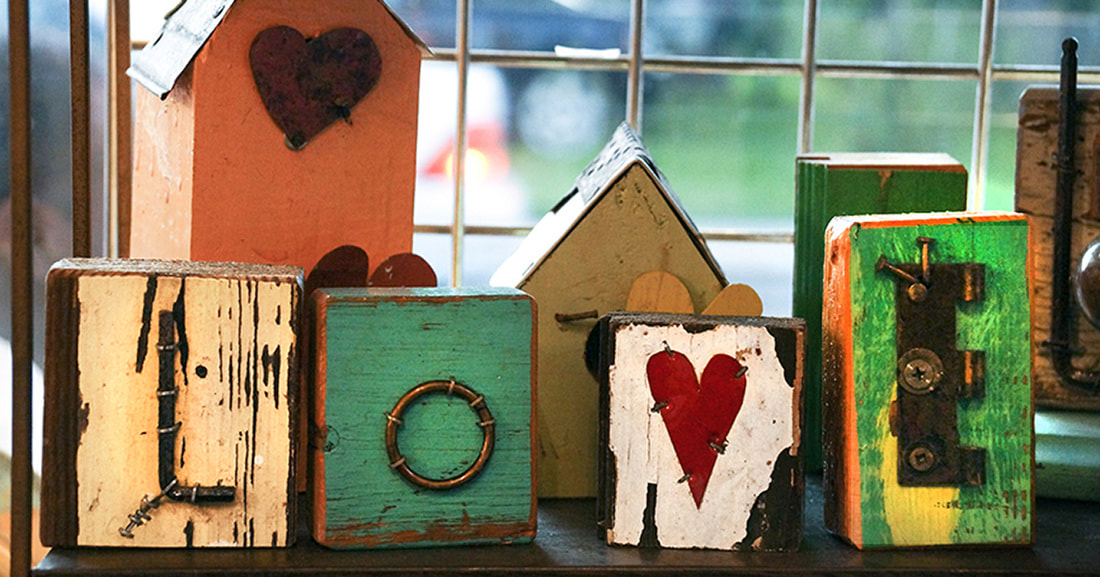






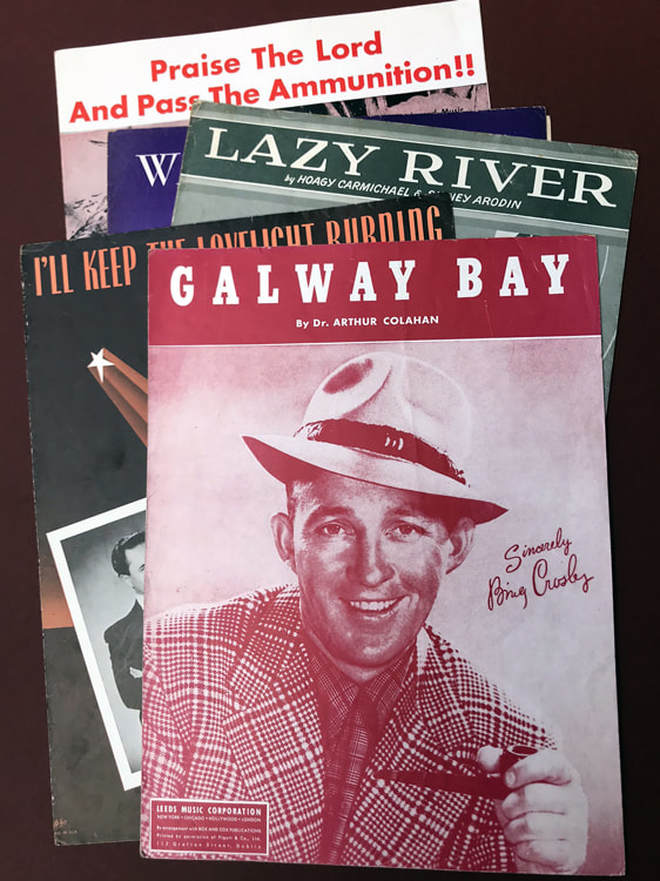






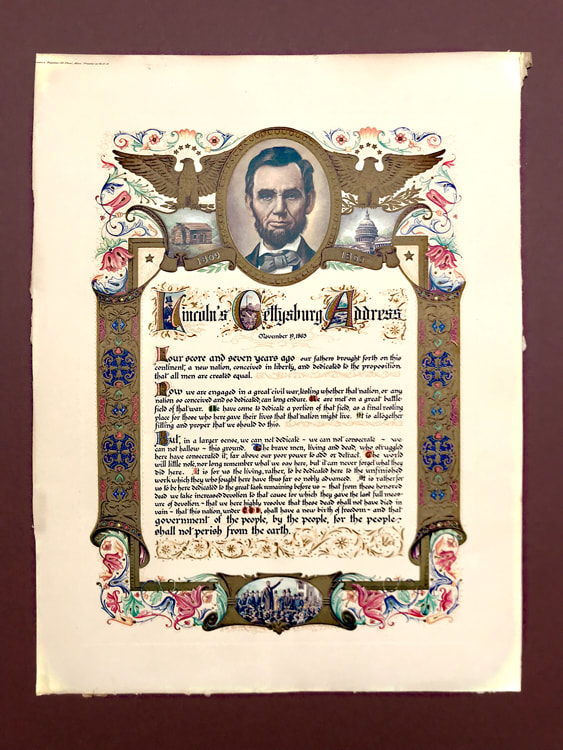














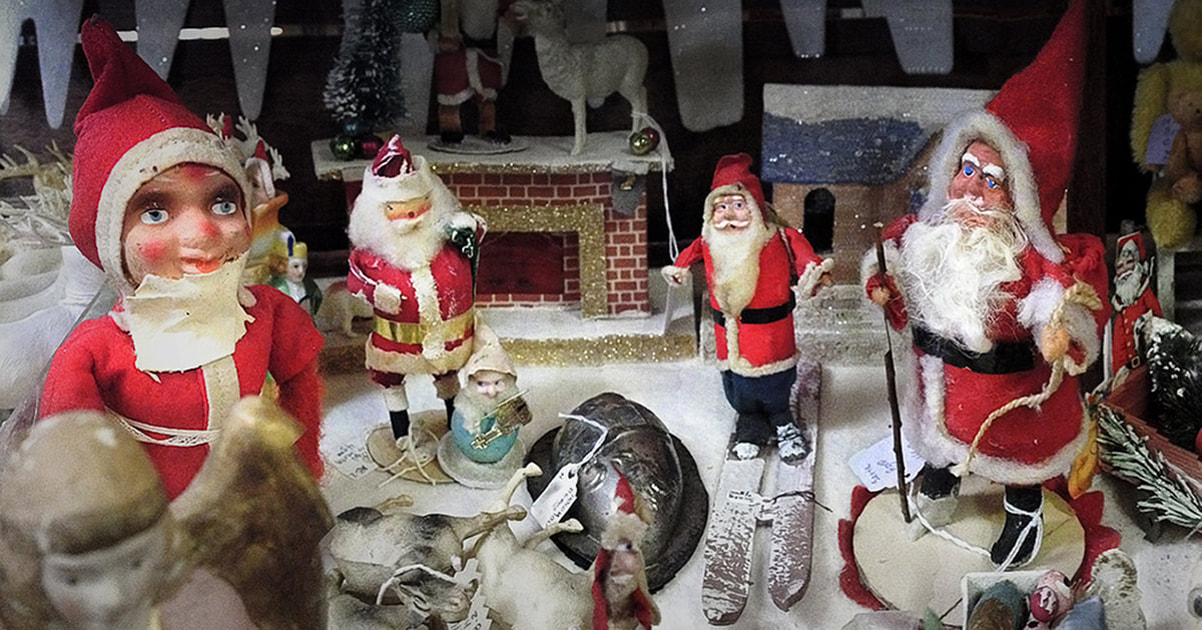




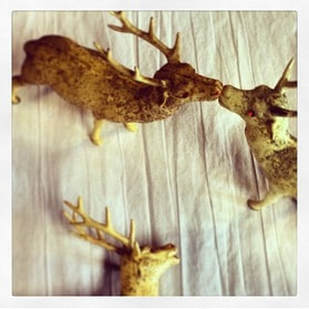












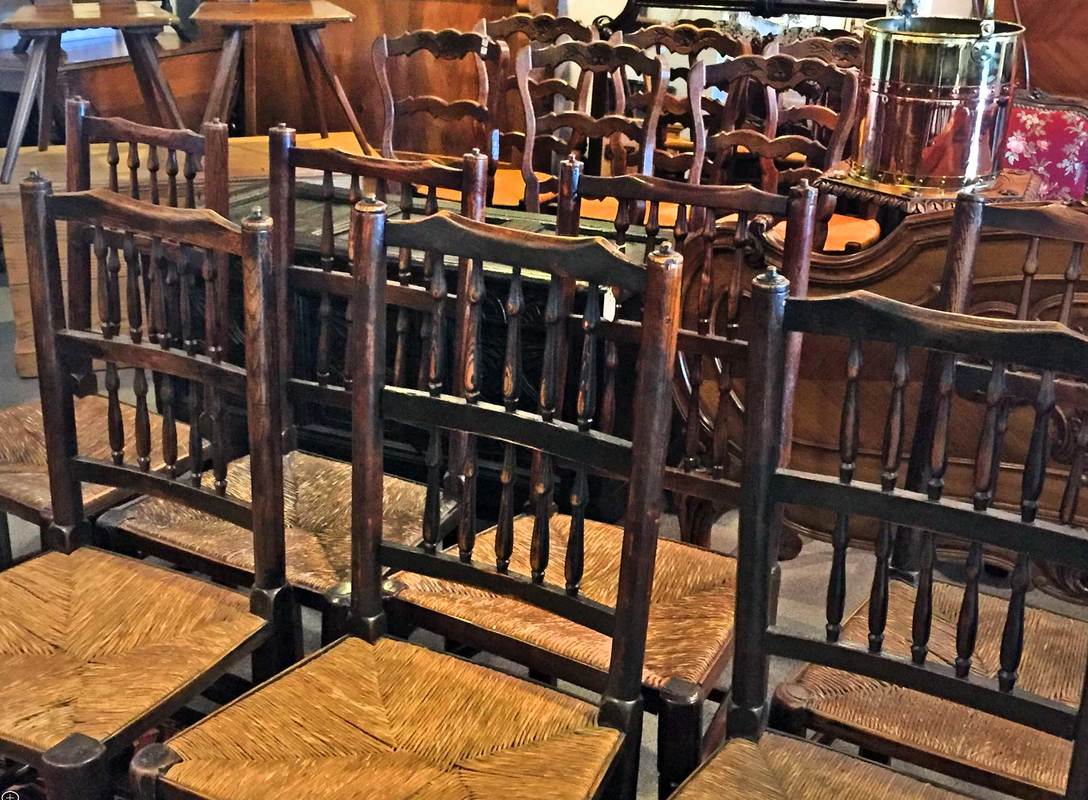
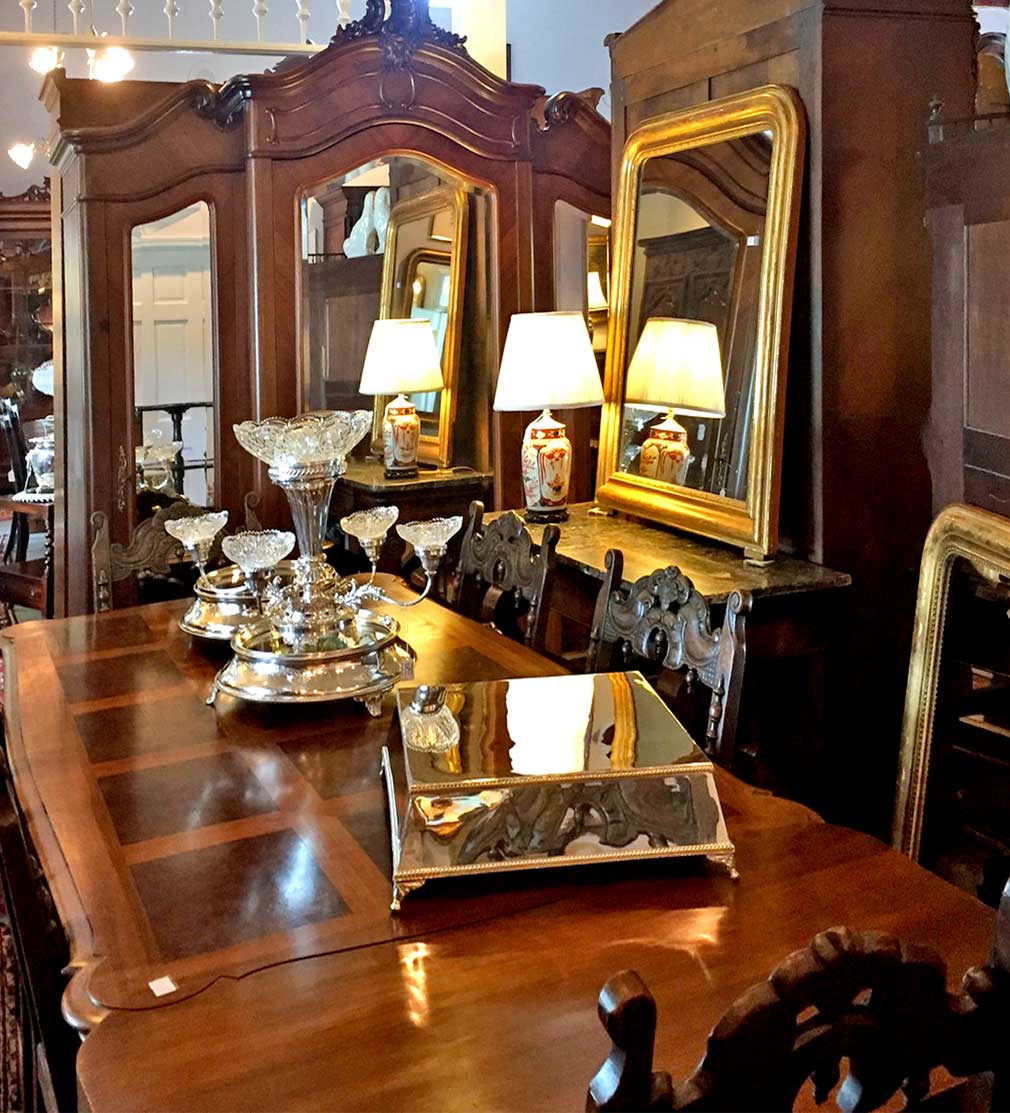



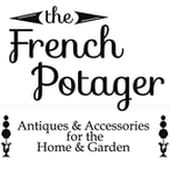







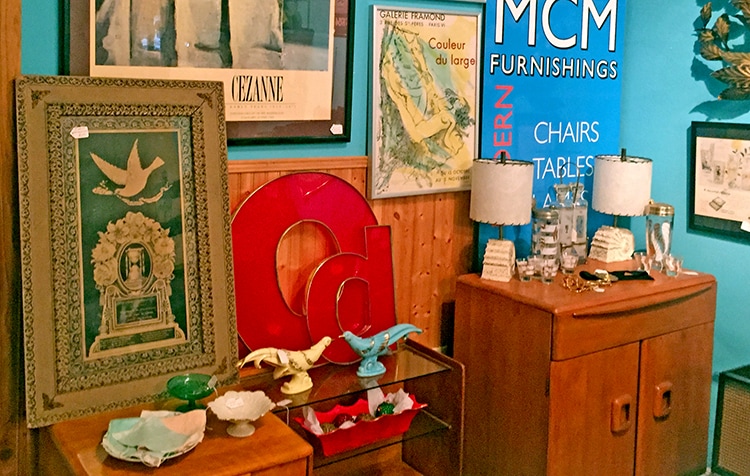



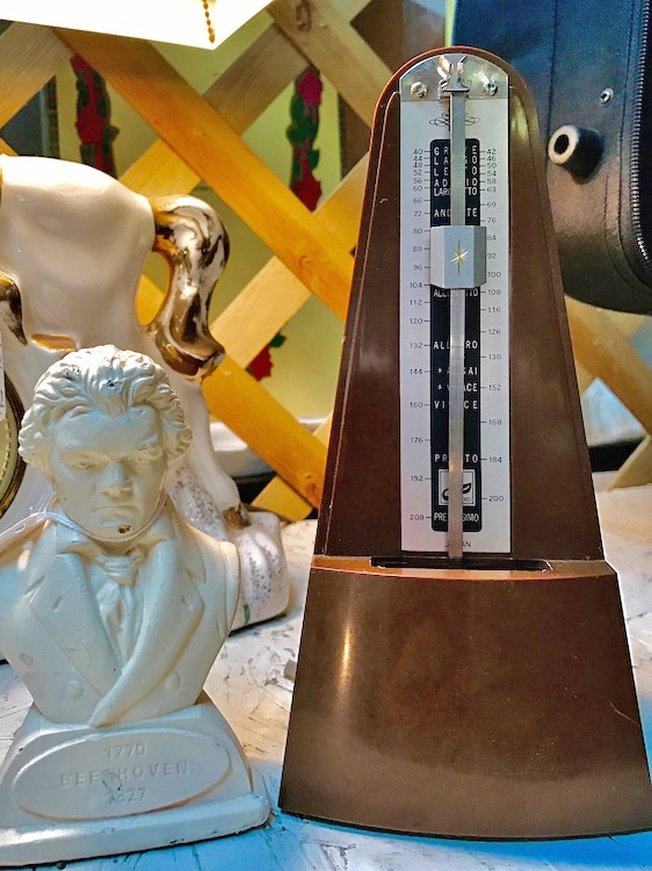







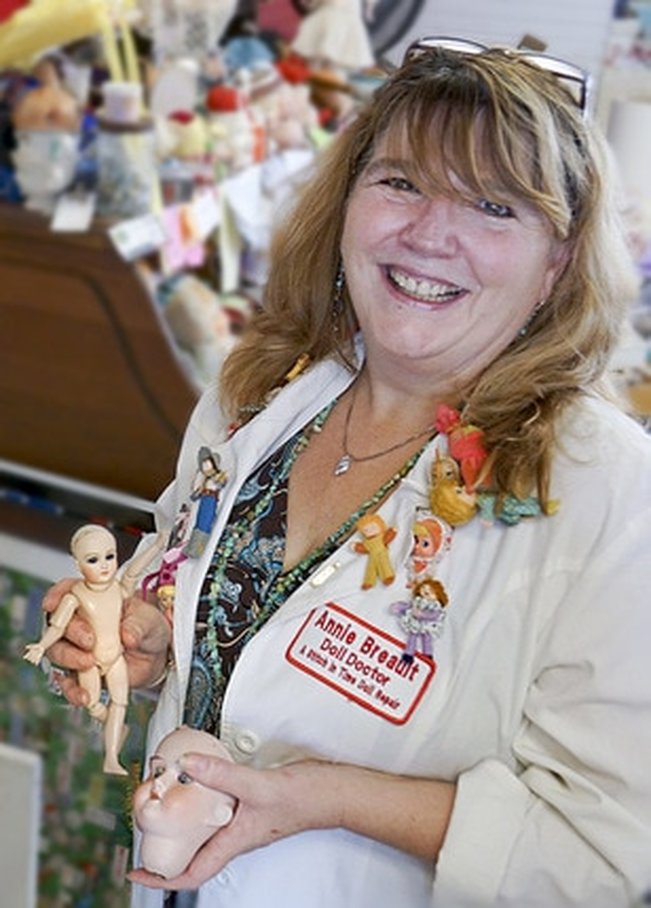






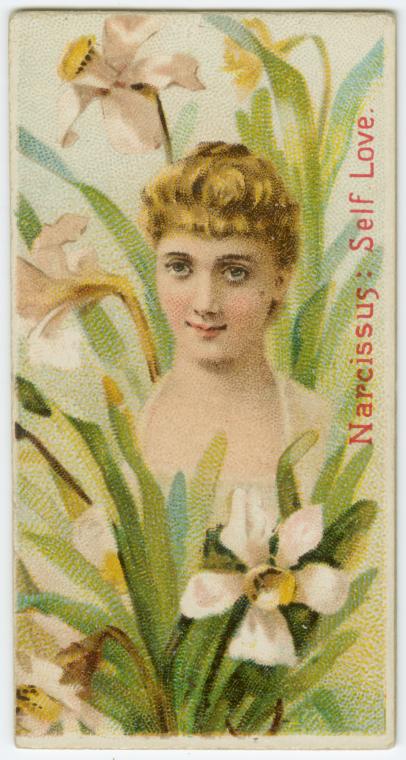
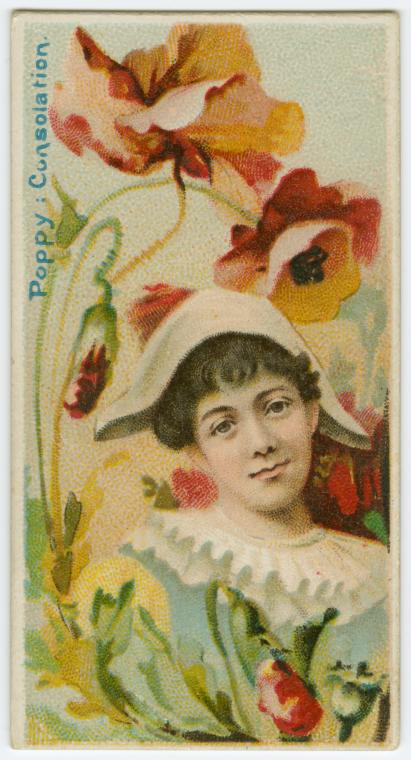
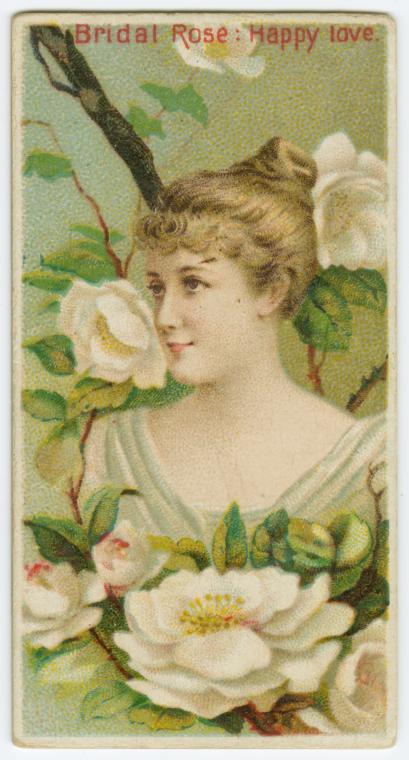








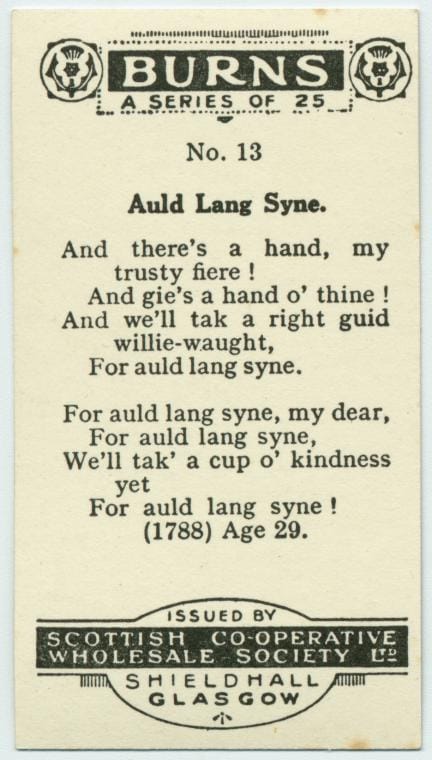





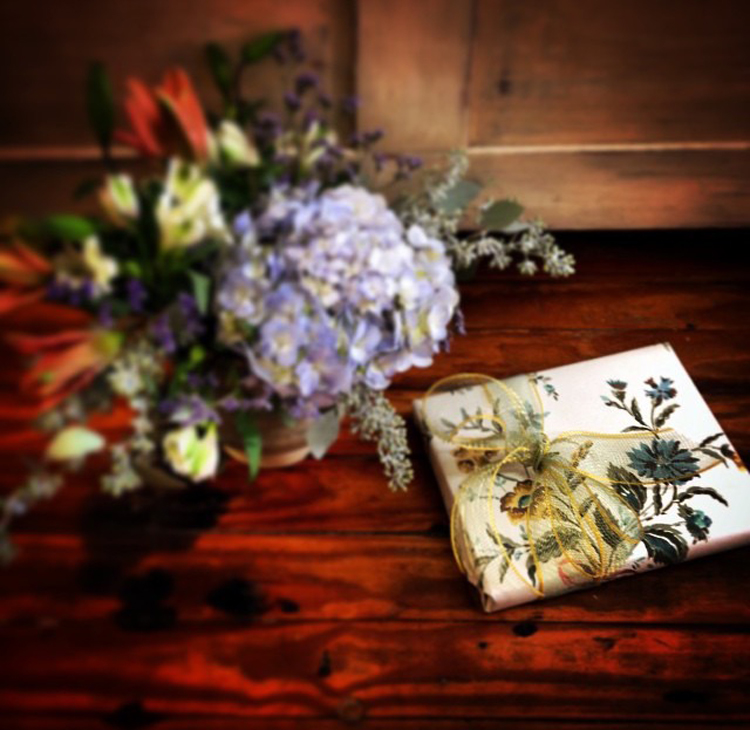



















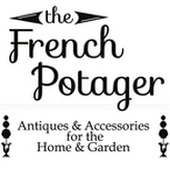


















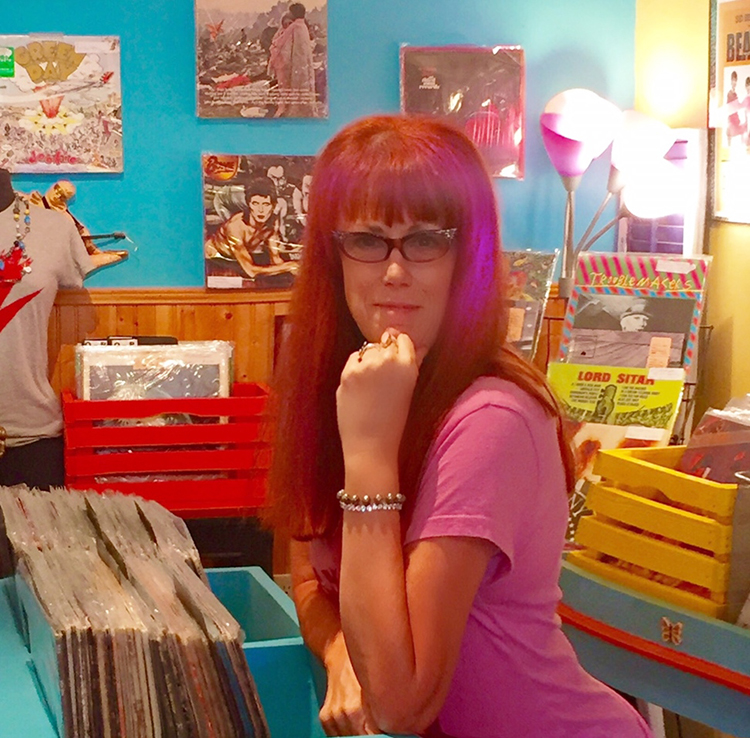



























 RSS Feed
RSS Feed























